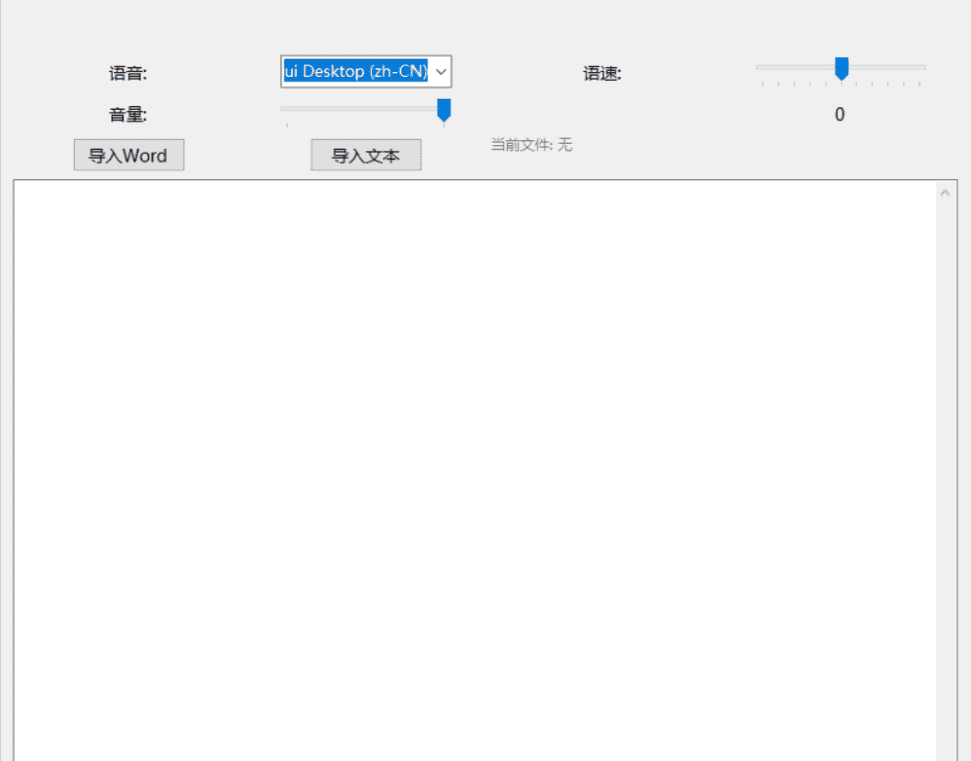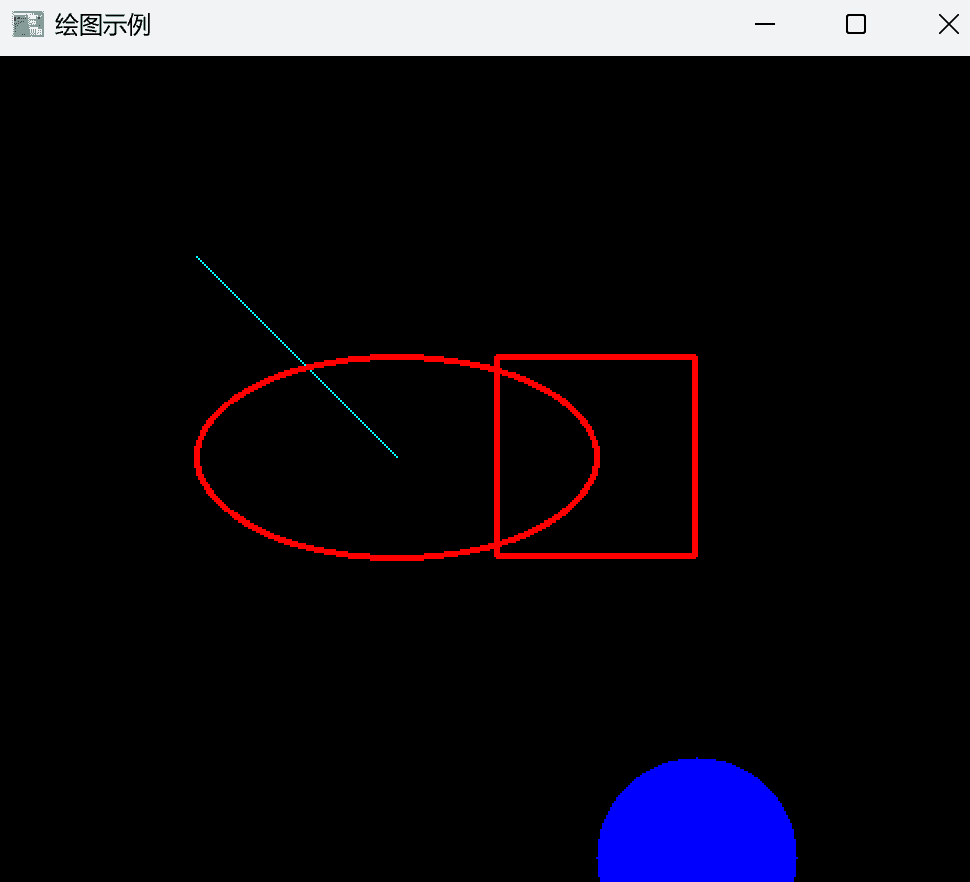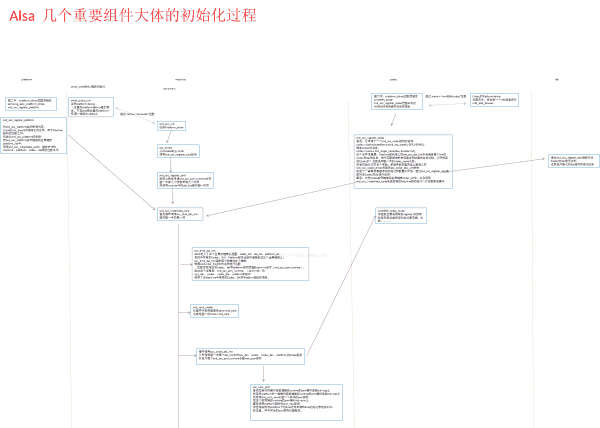1.应用场景
文本转语音(Text-to-Speech,简称 TTS)技术目前已广泛应用于以下多个领域
无障碍辅助
视障人士辅助:帮助视力障碍用户“听”网页内容、电子书、菜单等。
阅读困难者支持:如患有阅读障碍的人群,可通过语音获取信息。智能客服与语音交互
电话客服系统:自动播报账户信息、订单状态等。
语音助手:如 Siri、小爱同学、天猫精灵等设备中的语音反馈功能。
IVR(交互式语音应答)系统:引导用户完成自助服务流程。教育与学习
语言学习工具:提供标准发音示范,辅助外语学习。
有声教材生成:将课本或讲义自动转换为音频,便于学生听读。
在线课程配音:快速生成课程旁白,节省人工录音成本。内容创作与媒体
播客/视频配音:自媒体创作者使用TTS生成旁白或解说。
新闻播报:部分新闻平台用AI语音播报简讯。
有声书制作:将小说、文章等文字内容快速转为音频格式。车载与导航系统
导航语音提示:实时朗读路线指引。
车载娱乐系统:朗读短信、新闻或音乐介绍。企业办公自动化
会议纪要播报:将会议记录转为语音复盘。
邮件/通知朗读:在不方便看屏幕时听取重要信息。游戏与虚拟角色
NPC对话生成:动态生成游戏角色的语音对白。
多语言本地化:快速为游戏内容生成不同语言的语音版本。医疗健康
药品说明播报:帮助老年患者理解用药说明。
康复训练辅助:用于语言康复治疗中的发音练习。零售与广告
智能导购机器人:在商场中向顾客介绍商品。
语音广告:在公共场所播放由文本生成的促销信息。物联网(IoT)设备
智能家居反馈:如智能音箱、家电的状态提示音。
工业设备告警:用语音播报设备故障或操作指引。 随着深度学习和语音合成技术(如WaveNet、Tacotron、VITS等)的发展,TTS 的自然度、情感表达和多语种支持能力不断提升,未来应用场景还将持续扩展。接下来我们来看看在VBNET中基本的实现原理。
2.画一个UI界面
要实现什么样的功能,就应相应的配上好看的界面,往往界面画出来了,逻辑便清晰了。

3.核心原理
3.1 技术架构
基于Windows Speech API (SAPI)构建,使用以下核心技术:
System.Speech.Synthesis.SpeechSynthesizer
DocumentFormat.OpenXml
NAudio
3.2 核心工作流程
第一阶段:文本处理
支持格式:TXT、DOCX文件编码处理:UTF-8编码确保中文字符正确显示文档解析:使用OpenXML提取Word文档内容 第二阶段:语音合成
语音引擎:调用Windows系统的语音合成器参数控制:
语速调节(Rate:-10到+10)音量控制(Volume:0-100)声音选择(支持多种系统语音) 第三阶段:音频输出
实时播放:异步语音播放,不阻塞UI音频导出:
WAV格式:直接输出MP3格式:通过NAudio.Lame转换
3.3 系统依赖要求
Windows 10/11语音包.NET Framework系统必须安装中文语音包
4.核心代码
主要变量声明
' 核心语音合成对象
Private speechSynth As SpeechSynthesizer = Nothing
Private isReading As Boolean = False
Private currentFilePath As String = ""
Private useLocalSpeech As Boolean = False
Private Shared logger As SimpleLogger = New SimpleLogger()
语音引擎初始化
Private Sub InitializeLocalSpeechEngine()
Try
speechSynth = New SpeechSynthesizer()
' 添加事件处理器
AddHandler speechSynth.SpeakStarted, AddressOf SpeechSynth_SpeakStarted
AddHandler speechSynth.SpeakCompleted, AddressOf SpeechSynth_SpeakCompleted
AddHandler speechSynth.SpeakProgress, AddressOf SpeechSynth_SpeakProgress
' 检查可用语音
If speechSynth.GetInstalledVoices().Count > 0 Then
useLocalSpeech = True
LoadLocalVoiceOptions()
logger.Log("本地语音引擎初始化成功")
Else
useLocalSpeech = False
logger.Log("未找到可用的语音包")
End If
Catch ex As Exception
useLocalSpeech = False
logger.Log($"语音引擎初始化失败: {ex.Message}")
End Try
End Sub
开始朗读功能
Private Sub StartReading()
If Not useLocalSpeech OrElse speechSynth Is Nothing Then
MessageBox.Show("语音引擎不可用", "错误", MessageBoxButtons.OK, MessageBoxIcon.Warning)
Return
End If
Dim textToSpeak As String = txtContent.Text.Trim()
If String.IsNullOrEmpty(textToSpeak) Then
MessageBox.Show("请输入要朗读的文本", "提示", MessageBoxButtons.OK, MessageBoxIcon.Information)
Return
End If
Try
' 配置语音参数
ConfigureSpeechSynthesizer()
' 异步开始朗读
speechSynth.SpeakAsync(textToSpeak)
' 更新UI状态
isReading = True
UpdateUIState()
Catch ex As Exception
MessageBox.Show($"朗读失败: {ex.Message}", "错误", MessageBoxButtons.OK, MessageBoxIcon.Error)
logger.Log($"朗读失败: {ex.Message}")
End Try
End Sub
语音参数配置
Private Sub ConfigureSpeechSynthesizer()
If speechSynth Is Nothing Then Return
Try
' 设置语速 (-10 到 +10)
Dim rate As Integer = CInt(trackBarRate.Value)
speechSynth.Rate = rate
' 设置音量 (0 到 100)
Dim volume As Integer = trackBarVolume.Value
speechSynth.Volume = volume
' 设置语音
If cmbVoices.SelectedItem IsNot Nothing Then
Dim selectedVoice As String = cmbVoices.SelectedItem.ToString()
Dim voiceInfo = speechSynth.GetInstalledVoices().FirstOrDefault(
Function(v) v.VoiceInfo.Name.Contains(selectedVoice) OrElse
v.VoiceInfo.Culture.Name.StartsWith(selectedVoice))
If voiceInfo IsNot Nothing Then
speechSynth.SelectVoice(voiceInfo.VoiceInfo.Name)
End If
End If
Catch ex As Exception
logger.Log($"配置语音参数失败: {ex.Message}")
End Try
End Sub
音频保存功能
Private Sub SaveAudioFile()
If Not useLocalSpeech OrElse speechSynth Is Nothing Then
MessageBox.Show("语音引擎不可用", "错误", MessageBoxButtons.OK, MessageBoxIcon.Warning)
Return
End If
Dim textToSpeak As String = txtContent.Text.Trim()
If String.IsNullOrEmpty(textToSpeak) Then
MessageBox.Show("没有内容可以保存", "提示", MessageBoxButtons.OK, MessageBoxIcon.Information)
Return
End Try
Dim saveFileDialog As New SaveFileDialog()
saveFileDialog.Filter = "MP3文件|*.mp3|WAV文件|*.wav"
saveFileDialog.Title = "保存音频文件"
If saveFileDialog.ShowDialog() = DialogResult.OK Then
Try
ConfigureSpeechSynthesizer()
Dim filePath As String = saveFileDialog.FileName
Dim isMp3 As Boolean = Path.GetExtension(filePath).ToLower() = ".mp3"
' 生成音频到内存流
Using stream As New MemoryStream()
speechSynth.SetOutputToWaveStream(stream)
speechSynth.Speak(textToSpeak)
stream.Position = 0
If isMp3 Then
' 转换为MP3
ConvertToMp3(stream, filePath)
Else
' 保存为WAV
Using fileStream As New FileStream(filePath, FileMode.Create, FileAccess.Write)
stream.CopyTo(fileStream)
End Using
End If
End Using
MessageBox.Show("音频文件保存成功", "完成", MessageBoxButtons.OK, MessageBoxIcon.Information)
Catch ex As Exception
MessageBox.Show($"保存音频失败: {ex.Message}", "错误", MessageBoxButtons.OK, MessageBoxIcon.Error)
End Try
End If
End Sub
MP3转换功能
Private Sub ConvertToMp3(waveStream As Stream, outputPath As String)
Using tempWaveFile As New TempFile()
' 保存临时WAV文件
Using fileStream As New FileStream(tempWaveFile.Path, FileMode.Create, FileAccess.Write)
waveStream.CopyTo(fileStream)
End Using
' 使用NAudio.Lame转换为MP3
Using reader As New WaveFileReader(tempWaveFile.Path)
Using writer As New LameMP3FileWriter(outputPath, reader.WaveFormat, reader.WaveFormat.BitsPerSample)
reader.CopyTo(writer)
End Using
End Using
End Using
End Sub
事件处理器
' 朗读开始事件
Private Sub SpeechSynth_SpeakStarted(sender As Object, e As SpeakStartedEventArgs)
Me.Invoke(Sub()
lblStatus.Text = "正在朗读..."
UpdateUIState()
End Sub)
End Sub
' 朗读完成事件
Private Sub SpeechSynth_SpeakCompleted(sender As Object, e As SpeakCompletedEventArgs)
Me.Invoke(Sub()
isReading = False
lblStatus.Text = "朗读完成"
UpdateUIState()
End Sub)
End Sub
' 朗读进度事件
Private Sub SpeechSynth_SpeakProgress(sender As Object, e As SpeakProgressEventArgs)
Me.Invoke(Sub()
Dim progress As Double = (e.CharacterPosition / txtContent.TextLength) * 100
lblStatus.Text = $"朗读进度: {progress:F1}%"
End Sub)
End Sub
文件导入功能
' 导入文本文件
Private Sub ImportTxtFile(filePath As String)
Try
Dim content As String = File.ReadAllText(filePath, Encoding.UTF8)
txtContent.Text = content
currentFilePath = filePath
lblStatus.Text = $"已导入: {Path.GetFileName(filePath)}"
Catch ex As Exception
MessageBox.Show($"导入文本文件失败: {ex.Message}", "错误", MessageBoxButtons.OK, MessageBoxIcon.Error)
End Try
End Sub
' 导入Word文档
Private Sub ImportDocxFile(filePath As String)
Try
Using wordDoc As WordprocessingDocument = WordprocessingDocument.Open(filePath, False)
Dim body As Body = wordDoc.MainDocumentPart.Document.Body
Dim content As String = body.InnerText
txtContent.Text = content
currentFilePath = filePath
lblStatus.Text = $"已导入: {Path.GetFileName(filePath)}"
End Using
Catch ex As Exception
MessageBox.Show($"导入Word文档失败: {ex.Message}", "错误", MessageBoxButtons.OK, MessageBoxIcon.Error)
End Try
End Sub
核心原理总结
语音合成引擎:基于Windows SAPI,实现完全离线工作异步处理:使用
SpeakAsync
Invoke
5.运行演示
视频链接:VBNET_文本转语音
源码下载
上一篇:VBNET_图片PNG转ICO格式
CSDN笔记汇总
相关文章




